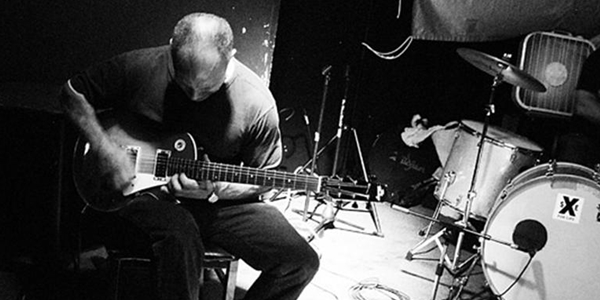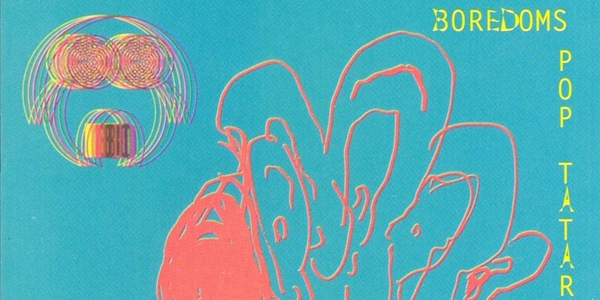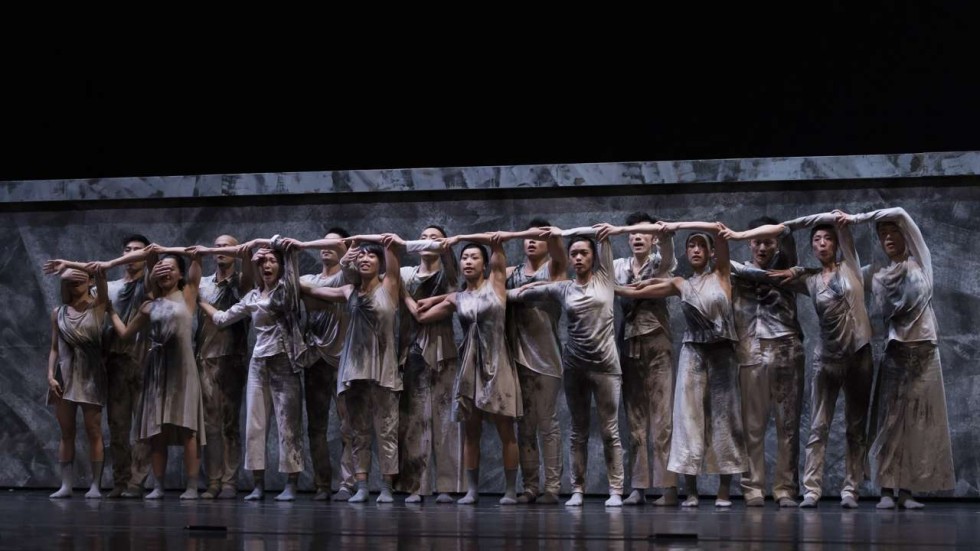
Paul Lemos | Credit: Bill T. Miller
What influences the originators? Artists like Paul Lemos of Controlled Bleeding were essential to building and defining the industrial genre and have served as inspiration to hundreds of other artists. But as original and groundbreaking as their music is, it does not arise in a void. The genius of those who build something new is their ability to synthesize a diversity of influences with their own imagination. The best continue to do so throughout their careers, remaining avid and open-minded listeners and finding ways to incorporate new sounds and structures into their own music.
To give some insight into how that process works, Paul Lemos gives a list of the albums that influenced him and that proved essential to the work of Controlled Bleeding. Look for their new album, Larva Lumps and Baby Bumps, to drop on August 26th on CD and September 23rd on vinyl.
—by Kate MacDonald
___

1. The Stooges – Fun House
My Aunt bought me this second Stooges album for Christmas when it came out in 1970, and I have been obsessed with it ever since. The album retains its pure bestial power forty-five years later and is, for me, one of the absolute classics, along with Never Mind the Bollocks and Raw Power. Ron Ashton‘s barbaric, gut-wrenching guitar squalls, the band’s endlessly repeated Neanderthal riffs, and Iggy Pop‘s animalistic vocal presence coalesced into something far more primal and nihilistic than anything I had ever heard or felt.

2. Henry Cow – In Praise of Learning
This is the polar opposite of Fun House, by one of the most cerebral, inventive, virtuosic bands ever. What an incredible combination of creative minds at the peak of their collective powers.Fred Frith, Chris Cutler, Dagmar Krause, Anthony Moore, Lindsay Cooper, and the brilliant, sorely underrated genius Tim Hodgkinson combine their musical and political vision into a recording of real depth and beauty as the group moves effortlessly from intricately composed vocal pieces to free improvisation. Henry Cow’s ability to blend elements of free jazz, modern classical composition, and musique concrete within the context of rock was deeply inspiring.

3. Einstürzende Neubauten – Kollaps
I found this by accident when it was first released, lying among a heap of imported LPs being dumped for a dollar each in a local shop on Long Island. Suffice it to say that Kollapsimmediately changed my view of what music could be and what I needed to express. Here was the same raging emotional violence that I had tried to articulate using guitars, bass and drums, but Einstürzende Neubauten conveyed their angst using the tools of industry, hammered metal on metal, primal screaming distortion, and cracked industrial springs. Kollaps was a real musical epiphany for me.

4. The Velvet Underground – White Light/White Heat
John Cale is one of my musical heroes—a true innovator and musical terrorist who rarely receives the credit he is due for shaping modern music. He delved into drone music and avant-classical composition in the mid sixties with the likes of John Cage and LaMonte Young, and was responsible for the meth-fueled mind fuck that is White Light in 1967. A truly ugly, headache-inducing classic released on a jazz label, White Light/White Heat stood in total opposition to everything that was considered music at the time.

5. The Godz – Contact High
ESP-Disk was putting out totally avant-garde records with no commercial potential through the mid sixties and early seventies, and was home to some of the great, early explorers of American free jazz like Albert Ayler and Sun Ra. Contact High was made by a bunch of acid-backed fuckups with no musical knowledge, and like the Shaggs album, it is blissfully horrible and beautiful in its own right.

6. Mahavishnu Orchestra – Between Nothingness and Eternity
Live, this group—powered by a young Billy Cobham on drums and John McLaughlin on guitar—would occasionally reach such dizzying heights of musical virtuosity and power that it literally gives me chills every time I hear the climax of the twenty-three minute “Dreams” from this live LP. I wanted to convey that same level of pure emotional intensity through my guitar playing.

7. Scientist – Rids the World of the Evil Curse of the Vampires
I was introduced to, and came to love reggae in 1974 with Bob Marley‘s Natty Dread LP, but it was the dub work of Scientist in the early eighties that really excited me and made me want to explore dub forms in my own music. This album contains some of the deepest, heaviest grooves I had heard. When Scientist strips down Wailing Souls‘ classic “Firehouse Rock,” the dub goes deep.

8. Fripp & Eno – No Pussyfooting
The Bruford/Wetton/Fripp lineup of King Crimson was one of the great bands I’ve seen or heard, and I always loved Eno‘s early work with Roxy Music and as a solo artist. Somehow, he was able to inspire some of Fripp’s best performances on record. The guitar solo on “Baby’s on Fire” (from Eno’s first LP, Here Come the Warm Jets) is just fucking killer—by far Fripp’s most visceral playing. No Pussyfooting‘s “Swastika Girls” featured some similarly incredible, emotionally gripping moments and set the stage for so much that would follow.

9. Swans – Cop
Swans in the early eighties was a menacing, self-loathing beast—the perfect aural representation of the bleak, filthy swamp of human sewage that was New York City’s Lower East Side. This dissonant, bruising set, propelled by heaving slave ship rhythms and relentless walls of repetition, was a massive inspiration. Skin Chamber really should have been named “SWANS Jr.”

10. Boredoms – Pop Tatari
When Yamatsuka Eye sent me a copy of his first LP in the late eighties, asking me to send a copy of Knees and Bones in return, I dismissed the record, not realizing the genius of his work. I was just not able to understand the magnificent insanity of his new group. Eye had, in fact, left me in the dust creatively. I was still into his total noise statements with Hanatarash. A couple of years later, guys like John Zorn would integrate Eye’s musical madness into Naked City, Mr. Bungle would imitate Boredoms, and the folks in Sonic Youth would collaborate with him. With the release of Pop Tatari (on Warner Bros., no less!), I finally understood the brilliance of this band. A chaotic amalgamation of the anti-music ethos of the Godz mixed with all manner of progressive rock, metal, and cheesy rock motifs, noodling electronics, and Eye’s unparalleled vocal savagery, Pop Tatari is pure musical hysteria.
Honorable mentions: Captain Beefheart‘s Trout Mask Replica, Arab on Radar‘s Soak the Saddle,No New York, the Ramones‘ first album, Penerecki‘s Kosmogonia, and Hellnation‘s Dynamite Up Your Ass.





















